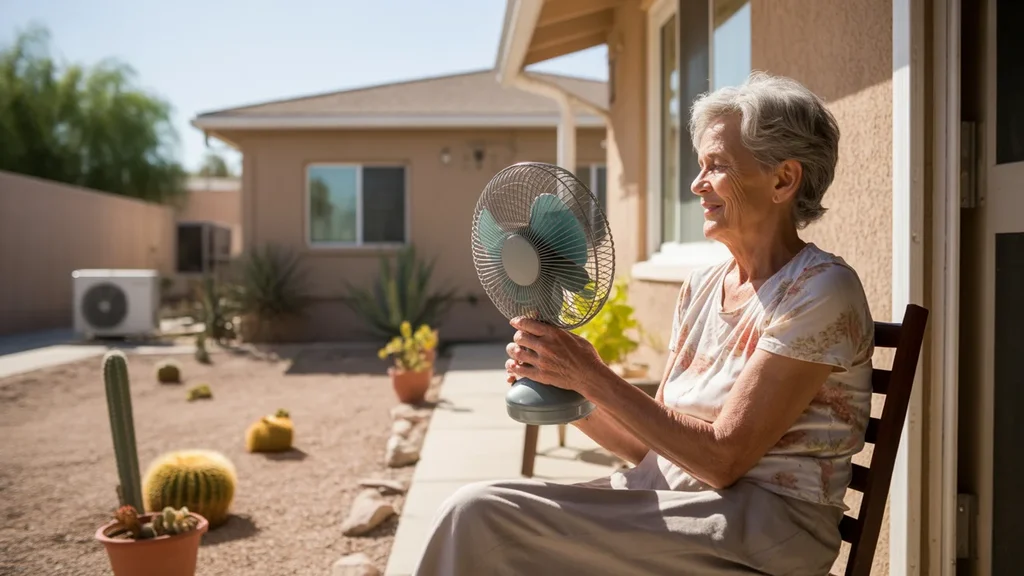What Summer Power Costs Look Like in Las Vegas
As the scorching desert heat settles in, residents of Las Vegas brace themselves for soaring summer energy bills. With temperatures regularly exceeding 100°F from June through August, air conditioning becomes a necessity rather than a luxury. The average monthly electric bill during these peak months can reach a staggering $200 to $300, with July often being the most expensive. The average July electric bill in Las Vegas is about $250, nearly double the cost of more temperate months.
This significant increase in energy expenses can strain household budgets, especially for those on fixed incomes or managing other high costs of living in the city. Understanding the factors that contribute to these elevated summer energy bills in Las Vegas is crucial for residents seeking to manage their expenses effectively.
Why Are Energy Bills So High in Las Vegas During the Summer?

Several factors converge to drive up energy costs during the summer months in Las Vegas. The primary culprit is the relentless demand for air conditioning. As outdoor temperatures soar, air conditioners work overtime to maintain comfortable indoor environments, consuming substantial amounts of electricity in the process. Older, less efficient AC units and homes with inadequate insulation compound this issue, requiring even more energy to cool effectively.
In addition to cooling costs, other energy-intensive appliances and systems contribute to high summer bills. Pool pumps, which often run for extended periods to maintain water quality in the heat, can add significantly to energy consumption. Increased use of appliances like refrigerators and freezers, which work harder in hot weather, also plays a role. With longer daylight hours, households may use more lighting and electronics, further increasing energy usage.
For some Las Vegas residents, the growing adoption of electric vehicles can also impact summer energy bills. Charging an EV at home during peak hours can add to the overall electricity demand, although the effect varies depending on charging habits and vehicle efficiency.
Sample Monthly Bill Breakdown
To better understand how energy costs are distributed during the summer, consider this sample breakdown for a typical 1,800 square foot home in Las Vegas with average air conditioning use:
| Component | Percentage of Total Bill |
|---|---|
| Cooling | 55% |
| Appliances | 20% |
| Water Heating | 15% |
| Lighting | 5% |
| Other | 5% |
As the table illustrates, cooling dominates energy use during the hot months, accounting for over half of the total bill. Expect cooling to account for 50–60% of your July energy bill in Las Vegas. Appliances and water heating also contribute significantly, while lighting and other miscellaneous uses make up a smaller portion.
Ways to Lower Summer Energy Bills
While high summer energy costs may seem inevitable in Las Vegas, residents can take several steps to minimize the financial impact. Consider the following strategies:
- Enroll in off-peak billing plans, if available, to take advantage of lower rates during non-peak hours.
- Install a smart thermostat to optimize cooling schedules and reduce waste.
- Seal air ducts and improve insulation to maximize cooling efficiency.
- Use shade features like trees, awnings, or solar screens to reduce heat gain through windows.
- Upgrade to energy-efficient appliances and light bulbs to reduce overall consumption.
🏆 Energy Tip: Set your thermostat to 78°F during the day and use ceiling fans to enhance comfort without drastically lowering the temperature.
Time-of-Use Pricing in Las Vegas
Some utility providers in Las Vegas, such as NV Energy, offer time-of-use (TOU) pricing plans. Under these plans, electricity rates vary depending on the time of day and day of the week. Peak hours, typically weekday afternoons and evenings, have higher rates, while off-peak hours and weekends have lower rates. By shifting energy-intensive activities to off-peak times, residents can potentially save on their summer bills.
Summer Cooling FAQs
Q: How much more are summer bills compared to spring?
A: In Las Vegas, summer energy bills can be 50-100% higher than spring bills due to increased cooling needs.
Q: Does solar reduce summer energy costs?
A: Yes, solar panels can significantly offset summer energy costs by generating electricity during peak sunlight hours. However, the savings depend on factors like system size, efficiency, and net metering policies.
Q: What temperature should I keep my house at to save energy?
A: The U.S. Department of Energy recommends setting your thermostat to 78°F when you’re home and awake, and higher when you’re away or asleep, to balance comfort and energy savings.
Smart Cooling Prep for Las Vegas Summers
As a Las Vegas resident, preparing for high summer energy bills is essential. By understanding the average cost range of $200 to $300 per month and implementing energy-saving strategies like off-peak usage, efficient appliances, and optimized thermostat settings, you can minimize the financial impact of the scorching desert heat.
For a more detailed breakdown of utility costs in the city, explore our Las Vegas Utility Costs Explained article. By staying informed and proactive, you can keep your cool and your budget in check during the demanding Las Vegas summers.
